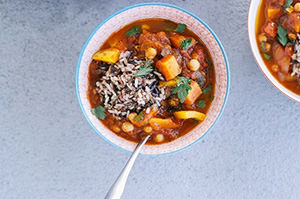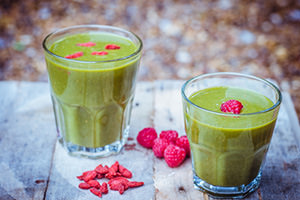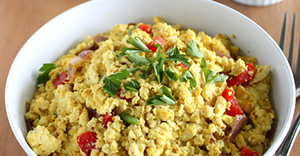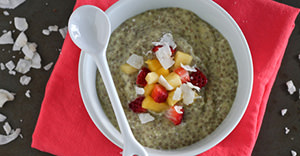
The Easy Way to Figure Out If You Have a Food Intolerance

Posted on 25 Sep, 2021

Since everyone and their cat (literally) is on a special diet, you’ve likely wondered at least once if you might have a food allergy or intolerance too. After all, you do sometimes feel a little bloated when you eat dairy.
But the thought of trying a super restrictive elimination diet or some fancy cleanse to identify if it’s dairy or gluten or fish triggering your symptoms seems a bit out of budget, exhausting, and certainly no fun: The list of what you can’t eat is longer than the one of what you can eat, it seems! And so long, social life, for three to four weeks since dining out or drinking is next to impossible on that type of diet.
Luckily there is an easier way to figure out if you have a food intolerance. Consider our plan the Cliff’s Notes version—something to try before you resort to expensive blood tests or extreme cleanses that can help identify the food(s) causing your misery.
Should You Try This?
Before diving into any restrictive diet, it’s important to have an idea if you have a food allergy or a food intolerance.
If, immediately after eating certain foods (in even microscopic amounts), your throat tightens, you get hives, or you experience anaphylaxis (a type of total-body shock), consult a board certified allergist, as that may be a food allergy—and that’s not something to self-diagnose.
On the other hand, symptoms like constipation, headaches, heartburn, fatigue, bloating, or difficulty swallowing may be a food intolerance. Sometimes this will get worse one to three hours after consuming a food, but often the timing makes it unclear if it’s diet or something else causing your problems.
Food challenges—where you take out a food out and then add back in to see if it causes symptoms—are considered the “gold standard” for diagnosing intolerances . Blood and skin testing can often give false or confusing results, so after those, sometimes doctors recommend a food challenge to confirm the sensitivity.
The Easy Elimination Diet
The plan below is a little different from a full elimination diet where you take out eight or more food groups at the same time. For most people it’s almost impossible and really cumbersome to take out so many foods at once. You may feel like you can only eat produce if you try that (and then wind up starving the entire time). This modified version is a lot easier because you eliminate three or four food groups at a time for 21 days since it takes about two to three weeks to notice any difference in your symptoms.
After those first 21 days of avoiding certain foods, you should feel better. That’s when you reintroduce the foods one by one, allowing at least three days before you reintroduce the next one so you’re able to notice any changes in how your body reacts to the food. If you add back all the eliminated food groups and have no symptoms, move on to the next step of the plan, when you’ll take out new foods. Continue doing this until a certain food group causes symptoms—that’s likely your trigger. You can stop the diet then, or continue if you think more than one food is at fault. You'll start by cutting out the statistically most common offenders, then move to less common ones, which should mean you can figure out your culprit faster.
During each phase, make sure to read food labels to see if packaged goods contain any ingredients you are avoiding. These foods are hidden in a lot more things than you think! When you eat out, ask the restaurant staff what’s in dishes. (For example, are the vegetables cooked in butter or is peanut oil used for that stir-fry?)
You won’t have to worry about being hungry since you’re only avoiding some foods, and you can always chow down on lot of fruits, vegetables, and healthy fats such as avocado and coconut. Vitamin deficiencies aren’t a concern either, since each phase is only 21 days.
Phase 1
 Breakfast: Oatmeal with almond milk, berries, and sliced almonds; and tea with non-dairy milk (such as almond or coconut)
Breakfast: Oatmeal with almond milk, berries, and sliced almonds; and tea with non-dairy milk (such as almond or coconut)
Lunch: Large salad that includes avocado, onions, jalapeños, tomato, peppers, spinach, hemp seeds (optional), and spirulina (optional); tossed with balsamic vinegar, olive oil, and nutritonal yeast (optional)
Snack: 1/2 cup raw nuts and seeds and almond milk cappuccino
Dinner: Chickpea stew (try one of these recipes), leftover salad from lunch, and 1 cup cooked brown rice
Dessert: 2 squares non-dairy extra dark chocolate
Phase 2
 Breakfast: Green smoothie: Blend almond, coconut, or rice milk; spinach; kale; berries; and chia seeds (optional)
Breakfast: Green smoothie: Blend almond, coconut, or rice milk; spinach; kale; berries; and chia seeds (optional)
Lunch: Black bean and spinach burger: Mix cooked black beans, cooked spinach, cooked oatmeal, salt, cumin, black pepper, onions, and garlic. Form into patties and grill. Top with avocado. Serve with green salad.
Snack: 10 raw cashews and 1 cup coconut water
Dinner: Roasted sweet potato and vegetables in marinara sauce
Dessert: 2 almond butter oat balls: Mix together rolled oats, almond butter, and dark chocolate chips and form into two-inch balls.
Phase 3
 Breakfast: Egg or sprouted tofu scramble; berries; and green tea
Breakfast: Egg or sprouted tofu scramble; berries; and green tea
Lunch: Kale, apple, almond salad with citrus dressing
Snack: 1/2 cup nuts and seeds
Dinner: Grilled portobello mushrooms (marinate in balsamic vinegar, garlic, salt, and onions first) served over quinoa pilaf made with almonds and green onions
Dessert: Gelato: Blend 1/2 cup frozen cherries with full-fat coconut milk
Phase 4
 Breakfast: Chia seed pudding: Mix chia seeds, coconut milk, sliced strawberries, and sliced almonds, and refrigerate overnight.
Breakfast: Chia seed pudding: Mix chia seeds, coconut milk, sliced strawberries, and sliced almonds, and refrigerate overnight.
Lunch: Baked portobello mushrooms stuffed with diced tomatoes, peppers, onions, and basil, and topped with cheese (optional)
Dinner: Quinoa with sautéed mushrooms, kale, and cubed sweet potato
Dessert: Berries mixed with unsweetened coconut flakes, lime juice, and basil
Your Post-Plan Plan
Let’s say you found out gluten is a problem for you. Then you should avoiding eating it and anything using it as an ingredient so you don’t have to suffer from symptoms. Yes, this means asking about meals at restaurants and reading labels, but you don’t have to cut out foods “processed in a facility with gluten” since a trace won’t throw you into allergic shock. And you may even be able to enjoy some wheat on rare occasions without many issues—for those without celiac disease, once you give your immune system and gut a break from the food and it heals, small amounts will be tolerable for most. Hello, birthday cake!
Amy Shah, M.D., is a premier medical doctor specializing in food allergies and gut health. She combines her nutrition background with medical training from Harvard and Columbia Hospitals to help people with bloating and other gut problems, which is at the root of most many medical problems. Find out more at www.amyshahmd.com
Must-Read Books On Healing Your Body


by Louise Hay


by David Servan-Schreiber
 Free Radicals - A Clear And Simple Explanation
Free Radicals - A Clear And Simple Explanation Proper Posture
Proper Posture 14 Creepy Ways What You Wear Could Be Hurting Your Health
14 Creepy Ways What You Wear Could Be Hurting Your Health How Stress Can Make You Sick
How Stress Can Make You Sick










